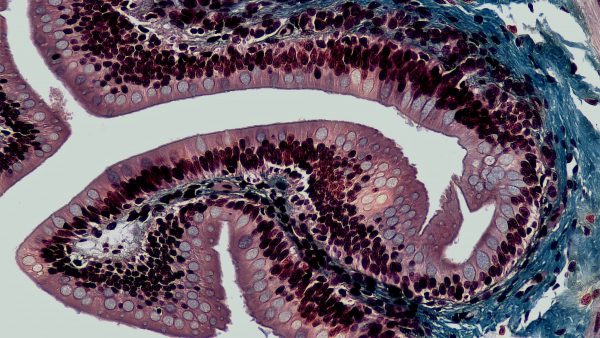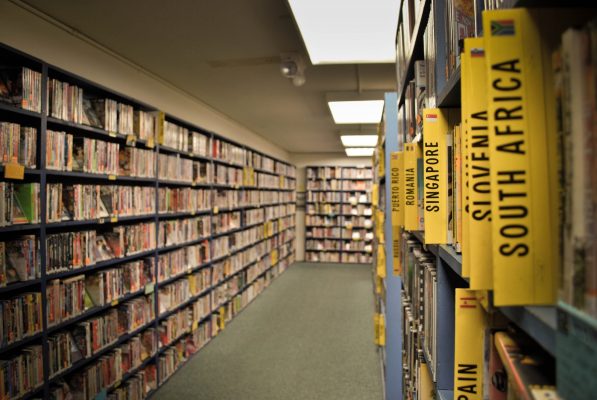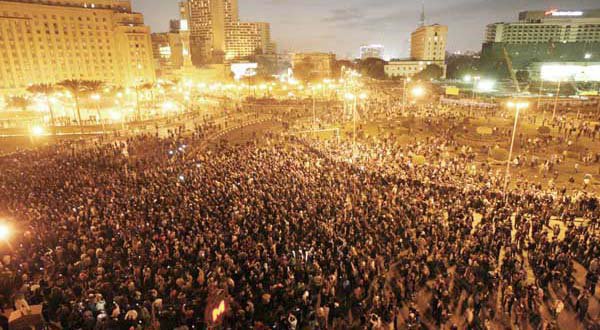Everywhere in the Japan of Yoko Tawada’s The Last Children of Tokyo, strange mutations unfold. In the years (perhaps decades, or perhaps generations) since an environmental catastrophe, the basic tenets of biology have broken down. Children are born weak, with birdlike bones and soft teeth. The elderly, in turn, are youthful, athletic, seem to have been ‘robbed of death’. Men begin to experience menopausal symptoms as they age. Everyone’s sex changes inexplicably and at random at least once in their lives.
This is a vaguely post-Fukushima world, but dystopian or post-apocalyptic are both ill-fitting categories for The Last Children of Tokyo. Instead, what Tawada has gifted us is a quiet new magical realism for the Anthropocene, which eco-philosopher Timothy Morton in Hyperobjects neatly summarises as the ‘inception of humanity as a geophysical force on a planetary scale’. In a move of narrative proficiency, Tawada never discloses the full details of the environmental disaster that catalysed these shifts in the natural order. We’re given only pieces of half-information. A major earthquake pushed the Japanese archipelago further away from the Asian continent (but when?). Pollutants (of what kind?) in the soil have now contaminated the asphalt in the streets.
Because this is not science fiction, the facts of how the world came to be this way – why Japan has isolated itself in a sort of Edo renaissance, why only some foods are available and not others, or why telephones no longer exist all – matter less than the quotidian details surrounding Yoshiro and his great-grandson, Mumei. Every morning for years, Yoshiro rents a dog as a jogging companion, though the word jogging has fallen into disuse (more on this shift in language later). He tries to prepare a breakfast that Mumei can safely consume, squeezing the juice from an orange and then cutting it into tiny pieces his great-grandson can actually chew. Yoshiro accompanies Mumei to and from school, which is serious labour for Mumei, as the boy struggles to walk even short distances. When Mumei gets too tired to keep going, Yoshiro simply puts him in the back carrier of his bicycle and pedals him the rest of the way.
The surprising tenderness of The Last Children of Tokyo’s ravaged world lies, in part, in the small reversals of the typical relationship between elders and children. Whereas young people once cared for the elderly, now Yoshiro has to go on caring for Mumei indefinitely. Whereas elders served as moral guides for the young, now Yoshiro finds in his great-grandson a tiny sage. Mumei is said to have the ‘uncanny ability to read people’s thoughts’. That is, he doesn’t just intuitively sense his great-grandfather’s moods, but can respond to Yoshiro’s fears before he even voices them. When Yoshiro worries about Mumei’s inability to absorb enough calcium, wondering privately that humans may evolve into a toothless species, Mumei says out loud, ‘Don’t worry, Great-grandpa, sparrows get along just fine without teeth.’
The future of the planet – of Mumei’s generation, of Mumei himself – is unclear. Yet Mumei doesn’t move through the world under a cloud of fear. While ‘worry seeds’ take root in Yoshiro, we’re told that Mumei doesn’t ‘know how to feel sorry for himself’, that when he experiences pain, it’s ‘pure pain’, without self-pity: ‘He didn’t seem to know what “suffering” meant; he simply coughed when food wouldn’t go down, or vomited it back up.’ And across Japan, adults nominate other gifted children like Mumei for a programme run by the secretive Emissary Association, which sends youths abroad to research the health of young people elsewhere in the world. In this new world ‘the adjective healthy didn’t really fit any child’, but older generations still look to them as potential leaders.
As the philosopher Jean-Luc Nancy suggests in After Fukushima, in our current age, all natural catastrophes now bear the mark of nuclear risk. Indeed nuclear catastrophe ‘remains the one potentially irremediable catastrophe, whose effects spread through generations, through the layers of the earth.’ And through the layers of culture, too. Catastrophes aren’t bound up in just the physical world anymore; they’re forever enmeshed in the technological, economic, and political systems out of and into which they emerge.
It makes sense, then, that the most curious and compelling mutations in The Last Children of Tokyo aren’t simply genetic, but are those that have seeped down into a subtler linguistic plane. Just as radioactive substances decay exponentially per their half-life, we learn too that ‘the shelf life of words was getting shorter all the time.’ In some cases, the change is neutral enough. Again, Yoshiro’s morning exercise is no longer called jogging but loping down. And it takes the man who runs the Rent-a-Dog store a moment to recall the meaning behind the outdated expression a walk.
But linguistic changes in The Last Children of Tokyo (which is translated here by Margaret Mitsutani) also speak to a larger, more insidious challenge than merely navigating which turns of phrase are no longer fashionable. A ‘war of words’ has emerged, and it is often unclear which terms from the daily lexicon can survive a push to expunge foreign influences. During a conversation with a baker about French, German, and English bread, Yoshiro is nervous about being overheard mentioning other countries. ‘Overalls’ is too foreign a word, so Yoshiro instructs Mumei to refer to his jumpsuit as tsunagi. Even foreign gestures have become suspect; Yoshiro and Mumei now wave with their hands moving up and down (‘like beckoning cats’), as waving hands side to side is considered to have been inspired by ‘a steady diet of foreign movies long ago’.
The word ‘mutation’ has itself become problematic. After dandelions appear with petals several inches long, scientists debate whether these oversized flowers should be considered ‘mutations’, or reclassified as chrysanthemums. One group ‘charged that “mutation” was a pejorative term… Actually the word mutation was rarely used anymore, having been replaced by the more popular environmental adaptation.’
Tawada never explicitly invokes the Fukushima disaster in The Last Children of Tokyo — there would be less magic in confounding dandelions and little boy sages if they could be linked to so specific an event. But the environmental adaptations of the novella raise questions that are still of this world: How do we translate into words enormous challenges that may never have solutions? How soon does a language become obsolete if it no longer accurately describes the world, if its vocabulary can’t accommodate or explain or express even everyday experiences? As an answer, Tawada presents a new epoch where the codes (genetic, linguistic) upon which our world is built have fractured, their sequences scrambled and the subsequent mutations resulting in a reality that is both familiar and dreamlike.




